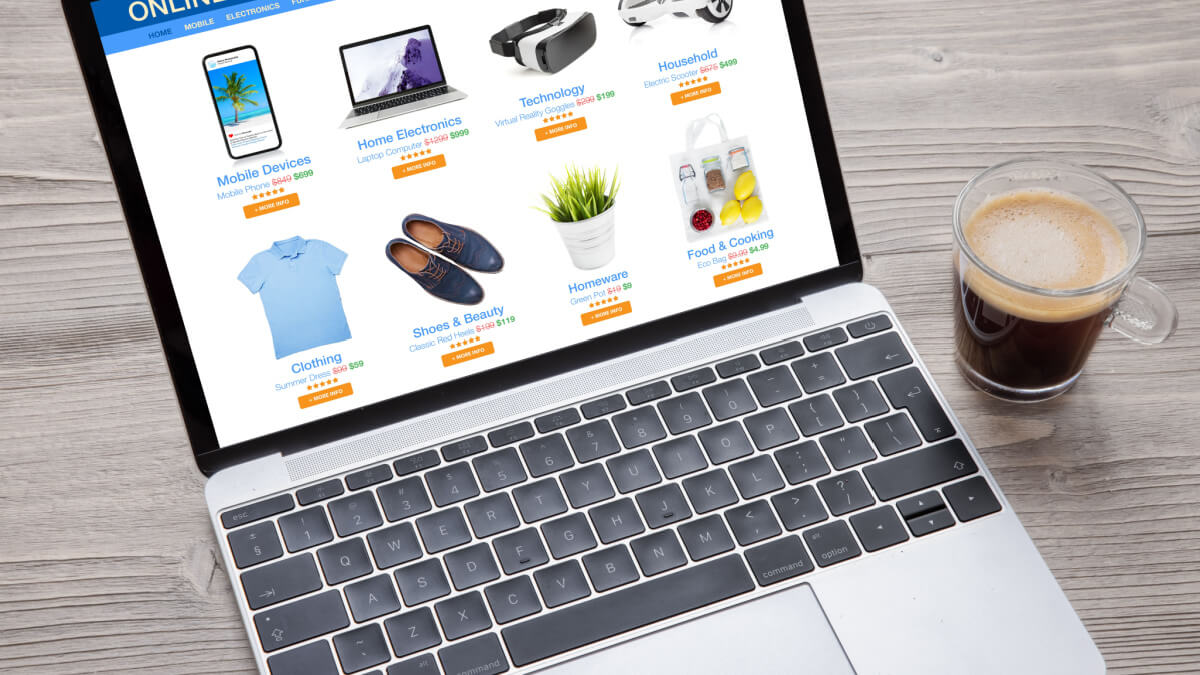B2B Cross-Border Payment Solutions Guide: Methods, Challenges, & More
Paying overseas vendors is common, but the hidden costs of B2B cross-border payments aren’t. Learn how to simplify international business payments today.

Shopify is a popular ecommerce platform that allows small businesses to run an online store to sell products, manage inventory and shipments, and accept payments in various currencies.
Around 60% of the 4.8 million stores using Shopify are based in the US.¹ Shopify’s US stores account for around 10% of all US ecommerce sales.²
So, if you’re looking to build an online presence, you likely want to know, how much does it cost to sell on Shopify? In this article, we break down the different Shopify fees to help you understand how much you’ll have to pay.
Accept Shopify payments with
Wise Business
Shopify charges sellers monthly subscription fees³ to use its platform for their stores. It has adjusted these fees for 2023. There are five different tiers. Shopify provides a 25% discount if you pay yearly rather than monthly. New signups pay $1 per month for the first three months.
The Starter plan allows businesses to set up a simple online store with product images and descriptions. It is best suited to selling products through social media and messaging apps using product links. The plan also comes with a mobile Shopify point of sale (POS) to accept in-person payments using a smartphone.⁴
The Basic plan includes the tools businesses need to create and customize a full online store. Sellers can add an unlimited number of product listings and manage orders and customer information from the Shopify account admin.
This option includes basic sales reports and two staff accounts. It also provides international market management and language translation. Sellers receive shipping discounts of up to 77%.
The Shopify plan includes the features of the Basic plan but with lower credit card rates and transaction fees. It comes with five staff accounts. And it adds more detailed reports that show how customers use the store and who buys which products. Sellers receive shipping discounts of up to 88%.
The Advanced Shopify plan is designed to help growing businesses expand their sales and use analytics to find new opportunities. The plan includes all the features of the Basic and Shopify plans, and it offers the lowest credit card rates and transaction fees. It also provides a custom report builder and 15 staff accounts. As with the Shopify plan, sellers receive shipping discounts of up to 88%.
This option allows you to show customers calculated shipping rates and collect duties and import taxes at checkout. This gives customers the total cost of the product upfront, which can help to increase sales conversions and reduce the risk of parcel refusals or returns.
The Shopify Plus plan is designed for businesses selling large volumes, allowing them to manage multiple stores from a single location. The plan starts at $2,000 per month, with businesses selling higher volumes able to negotiate a variable percentage fee.⁵
The management tools include specialized apps and channels for high-growth merchants, customizable checkout, API resources to integrate with custom apps, and access to curated service partners.
This option also includes access to a launch team to assist with migration tools and strategy, custom integrations, and other solutions to help you get your store online faster.
Unlimited staff accounts allow businesses to expand their employee access to the Shopify admin without additional costs. They also feature extra permission settings to give staff more control, including separate permissions to export reports and specific apps
This plan supports nine expansion stores for separate physical locations and international sales. It also includes access to Shopify POS Pro for up to 1,000 locations.
Once you’ve signed up for a plan, how much does it cost to sell items on Shopify? In addition to the monthly subscription fees, Shopify also charges transaction fees as a percentage of each sale if you use a third-party payment provider rather than its own Shopify Payments service.
The fees vary based on the subscription plan:
Sellers that use Shopify Payments pay transaction fees of 5% on the Starter plan. On the Basic, Shopify and Advanced plans they pay credit card fees for each transaction, while sellers on Shopify Plus in the US pay no transaction fees.
Shopify charges a fee to accept payments from credit card networks, such as Visa and Mastercard. The fees vary depending on the plan and whether the payment is taken online or in person via a Shopify POS. This is because of the higher risk of taking payments online compared to in-person.⁶
The rates are:
Sellers pay an additional 1% for payments with international credit cards.
How much does it cost to sell products on Shopify online and in person? Shopify’s monthly subscription plans come with basic POS features for online businesses that occasionally sell at in-person events. But for businesses that also have physical locations, the Shopify POS Pro plan costs $89 per month for each location, or $79 if billed yearly.⁷
POS Pro includes staff management, omnichannel selling, customer relationship management, inventory management, and sales reports.
To get the best out of the platform, many businesses add features from the more than 8,000 apps available from the Shopify App Store. Some of these apps are free to use, but others charge one-off or subscription fees in addition to the Shopify subscription rates.
You can also develop custom apps to add features to your Shopify admin, which can cost anywhere from $5,000 to $20,000.⁸
The Shopify Theme Store offers more than 100 free and paid themes to help businesses tailor the look and feel of their online store to their product and branding needs.
Free themes include all that sellers need to set up an online store. Paid themes tend to provide more features and design customization for more control over a store’s appearance and functionality than free themes. Premium themes can cost between $150 and $350 to install.⁹
Shopify stores come with a default myshopify.com URL. Businesses that want to change their default web address need to buy a custom domain name.
The exact price of a domain depends on the top-level domain (TLD) extension – such as .com, .org, .store, etc. Shopify’s prices range from $13 for a .store extension to $37 for a .tech extension.¹⁰
Most of Shopify’s plans support up to 20 domains or subdomains, except the Shopify Plus plan, which allows up to 1,000.
Shopify allows sellers to accept payments from customers in their local currency, which can make their store more attractive to buyers hesitant to pay in US dollars. Shopify charges a currency conversion fee of 1.5% in the US to convert the amount received in the customer's currency to the seller’s payout currency.¹¹
You can save money on international sales fees if you receive Shopify payments with Wise. With a Wise Business account, you can receive local account details for 10 different countries to receive payments like a local.
Wise for ecommerce
Payment gateway coming soon.
Learn more
It’s important to know that selling products on Shopify costs more than the price of a monthly subscription package. There are transaction fees, credit card fees, and currency conversion fees, not to mention the additional cost of POS systems, apps, themes, and domain names.
Still, using Shopify is cheaper, faster, and easier than building an ecommerce store from scratch. And using Wise Business to accept local currency payments is one way you can bring down the transaction costs.
Find out more about Wise Business
Wise is not a bank, but a Money Services Business (MSB) provider and a smart alternative to banks. The Wise Business account is designed to make it easier for international customers to pay you.
Open a Wise Business account today to receive fast international payments.
Sources:
¹ Shopify statistics
² https://www.fool.com/investing/2023/05/09/selling-shopify-stock-change-mind/
³ https://www.shopify.com/pricing
⁴ https://www.shopify.com/starter
⁵ https://www.shopify.com/plus/pricing
⁶ https://help.shopify.com/en/manual/intro-to-shopify/pricing-plans/pricing-overview
⁷ https://www.shopify.com/pos/pricing
⁸ https://www.shopify.com/blog/ecommerce-website-cost
⁹ https://www.shopify.com/blog/shopify-themes
¹⁰ https://www.shopify.com/blog/domain-price
¹¹ https://help.shopify.com/en/manual/markets/pricing/fees
All sources checked June 5, 2023.
*Please see terms of use and product availability for your region or visit Wise fees and pricing for the most up to date pricing and fee information.
This publication is provided for general information purposes and does not constitute legal, tax or other professional advice from Wise Payments Limited or its subsidiaries and its affiliates, and it is not intended as a substitute for obtaining advice from a financial advisor or any other professional.
We make no representations, warranties or guarantees, whether expressed or implied, that the content in the publication is accurate, complete or up to date.

Paying overseas vendors is common, but the hidden costs of B2B cross-border payments aren’t. Learn how to simplify international business payments today.

B2B payment processing doesn’t have to be hard. Learn how growing businesses can simplify cross-border transactions, streamline invoicing and get paid faster.

Discover strategies to enhance B2B payment security, reduce fraud risk, and protect cash flow using secure digital payment methods and automated workflows.

B2B payment automation helps small businesses save time and reduce costs. Read about how automation replaces manual tasks and boosts accuracy and cash flow.

Ace your next interview with these top controller questions, sample answers and expert tips focused on financial operations and leadership skills.

Discover how to build a global recruitment strategy. Learn how to attract, hire, and retain international talent.